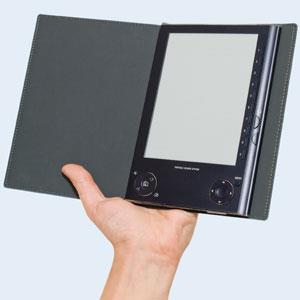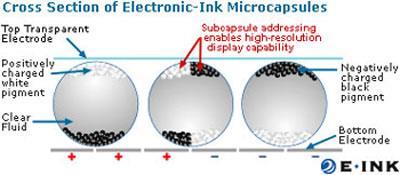Coloured electronic ink has edged closer to market following the purchase of the US e-ink supplier by a Taiwanese firm
E Ink Corporation, the US-based provider of the electronic ink used in the Amazon Kindle and Sony Reader electronic books, is to be brought by Prime View International in Taiwan for approximately $215 million (?133 million). The companies say this should speed to market the coloured ink devices that are currently being trialled.
Announced on 1 June, the sale of this Massachusetts Institute of Technology (MIT) spin-off company is subject to share holder and customary regulatory approval and is expected to be finalised in late 2009.
E Ink and Prime View International (PVI) already had an existing relationship, with PVI providing the thin film transistor flat plans that electronic ink is laminated onto during the manufacture of the electronic books.
’Combining E Ink and PVI creates a single public company that is dedicated to electronic paper,’ said Russ Wilcox, co-founder, president and CEO of E Ink. ’With a common ownership structure, we can get closer to customers around the world, streamline the supply chain, and speed up new product development.’
Scott Liu, chairman and CEO of PVI agrees: ’The people in both companies will unite to provide the world’s best digital reading experience and that will benefit all our customers and end users.’
’The market for electronic book devices such as the Sony Reader and Amazon Kindle is forecasted to grow from 1.1 million units in 2008 to 20 million units in 2012,’ said analyst Vinita Jakhanwal from electronics market intelligence firm iSuppli.

The world in technicolour
The ’pages’ of electronic books are currently black and white, and colour devices are an area that E Ink is visibly keen to develop. On 2 June the company demonstrated its latest colour prototype at a display technology show in San Antonio, US.
Joseph Jacobson from MIT, co-founder and director of E Ink, told Chemistry World that ’most books are black and white, and so the people that buy the [Amazon] Kindle are happy with it being black and white. But there are book markets where colour is important such as textbooks, newspapers and magazines.’
Their prototype colour displays use the original technology designed by E Ink for black and white electronic readers, with colour filters placed over the top (for further information see the box below). The cost of the colour technology, however, is one hurdle that needs to be overcome. ’Historically, the colour filter had a significant cost contribution to the whole display,’ explains Jacobson. ’But there is new technology using inkjet printing, and since electronic ink is a plastic film already, to print the colour filters right onto the e-ink display I think is a technology that we will see, and that will help to bring the costs down.’
’My best guess is that sometime next year we will start to see colour e-ink and e-paper products [available to buy],’ he adds.
Branching out
E Ink technology isn’t just for electronic books; it has also been used in a whole host of other applications ranging from mobile phones to funky watches.
’We are just starting to show the tip of the iceberg in terms of what is possible and I think in the future through further developments in chemistry and other technologies we should expect to start to see these types of displays to start to become flexible and hopefully also the costs coming down as well.’
How E Ink’s technology works
The ink used by E Ink consists of microcapsules containing both positively charged white - normally titanium dioxide - particles and negatively charged black dye particles suspended in a clear oily fluid. This ink is then printed onto a sheet of plastic film on top of a layer of thin film transistors.
For areas where dark ink is required a negative charge is applied - this causes the white particles to move to the bottom of the capsules, where they are hidden, and black particles to move to the top. In the region where white is needed a positive charge is applied, causing the contents of the microcapsules to switch over.

For the colour devices the underlying chemistry and concept is very similar, although tweaks have been made to make the white particles brighter. In a concept borrowed from liquid crystal displays, colour filters - containing strips of red, green and blue - are laid across all of the microcapsules in the display. Each group of three microcapsules contains a red, a green and a blue independently controllable capsule. If all three capsules are set to the black state the ink will look black, and if they are all set to the white state the eye will see the combination of red, green and blue as white. If you have the capsule under the red filter set in white state and the others in the black state it will look red, and so on.
Nina Notman






No comments yet